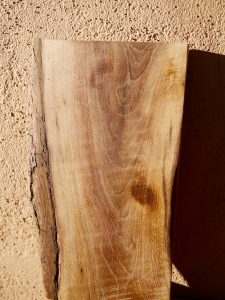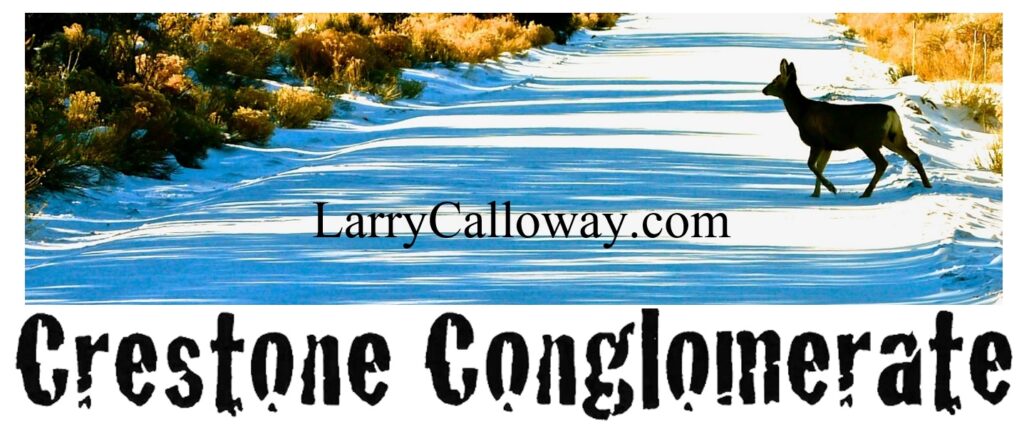By Larry Joseph Calloway
The networks were so unprepared for Donald Trump’s win that my election night switching caught only one panelist who could speak with authority for the key voters euphemistically called “white – no college degree.” He was J. D. Vance, the black-haired concise-speaking author of “Hillbilly Elegy,” an immediately personal story of his poor and violent family from Appalachian Kentucky.
I was reading it in October along with another pre-election bestseller, the radical history “White Trash” by Nancy Isenberg. These books are cultural not political, but they explain something about the “populist uprising,” as Vance termed it in an interview while adding that Trump understood the anger behind it but offered no solutions.
Apart from politics, my research represented an obsession with my father’s hardwood Appalachian roots. He was always wanting something far away. His sisters talked of North Carolina when we visited their farms near Lyons, CO. They were pretty and spoke in sweet accents. My father drank. He died. I was about to set the periodic ancestry project aside when, suddenly, up popped an email from a total stranger in Longmont, Colorado. I’ll get to the deep synchronicity* of it in a few minutes.
Writer-lawyer Vance’s family moved from Jackson, KT, to Middleton, in southern Ohio, so his grandfather could work in the Armco steel mill. It rusts away now under a Japanese name. His grandfather died as an out-of-work alcoholic. His mother, pregnant at high school graduation with his older brother, was more in love with drugs than any of her half dozen husbands.
His elegy is for his grandmother, who raised him. She was a heroic exemplar of the lost mountain culture of pride and toughness. She disciplined him relentlessly to pursue self-improvement through education and even, among other folksy wisdoms, learning golf because “that’s where rich people do business.” (Trump is an international developer of golf courses.)
Mamaw, as he called her, represents the culture lost when the families of several generations were uprooted by economics and dropped dead by economics. “The Lord giveth and the Lord taketh away,” as my father used to say. I had his brother-in-law minister, a chaplain of the Arizona National Guard, read it at his graveside ceremony. Vance does not mention churchgoing in Middleton, but I suppose religion was a part of the lost culture because in every North Carolina hollow where I searched for Calloways there was a church — usually Baptist — often looking forsaken. Vance observes out of nowhere, “I wasn’t surprised that Mormon Utah — with its strong church, integrated communities, and intact families — wiped the floor with Rust Belt Ohio.”
Utah voted for Trump despite his insults of Mitt Romney and Romney’s strident case against Trump. Romney is a popular sectional president of the LDS Church. This tells you something.
Vance joined the Marine Corps after high school, served in Iraq, returned as a motivated student at Ohio State. I doubt we would know of him if he had not, somehow, been accepted by Yale Law School. His narration of the dissolute recruiting there by rich and powerful law firms leaves no doubt that a prestigious degree is a ticket up and out of all the lesser classes, that it is a platform from which to publish a bestseller or even run for high office. (George H. W. Bush, Bill Clinton, George W. Bush, and Hillary Clinton went to Yale. Barack Obama went to Harvard.)
The book by Isenberg, a professor at Louisiana State, is about “The 400-Year Untold History of Class in America,” in the words of the subtitle. She refutes the inspirational tradition of “this new man, this American” that was still being taught when I was a journalism fellow at Stanford 36 years ago. She writes of “an uneasy tension between what Americans are taught to think the country promises – the dream of upward mobility – and the less appealing truth that class barriers almost invariably make that dream unobtainable.”
Much of the book is a laborious etymology, beginning in 16th Century England, of “white trash” and its synonyms, which she itemizes: Waste people. Offscourings. Lubbers. Bogtrotters. Rascals. Rubbish. Squatters. Crackers. Clay eaters. Tackies. Mudsills. Scalawags. Briar hoppers. Low-downers. White niggers. Degenerates. Rednecks. Trailer trash. Swamp people. Hillbillies.
“The Civil War was a struggle to shore up both a racial and a class hierarchy. The Confederacy was afraid that poor whites would be drawn in by Union appeals and would vote to end slavery,” she writes. In other words (my take), the plantation elite engaged the poor in a war against their own interests. They were little better than slaves.
By contrast, she writes, “The ‘one percent’ is the most recently adopted shorthand for moneyed monopoly, bringing attention to the ills generated by consolidated power, but the phenomenon it describes is not new. Class separation is and has always been at the center of our political debates, despite every attempt to hide social reality with deceptive rhetoric.”
Of politicians, she observes, “They are seen wearing blue jeans, camouflage, cowboy hats, and Bubba caps, all in an effort to come across as ordinary people. But presidents and other national politicians are anything but ordinary people after they are elected.”
The entertainment industry founded this kind of costuming with fake ethnic TV comedies like “The Beverly Hillbillies,” and “The Dukes of Hazard.” Elia Kazan was perhaps the first in the industry to take the Southern ethnicity seriously with “A Face In The Crowd” starring Andy Griffith as a self-styled “country boy” singer who rises to stardom and destructive tyranny.
And then there was the dark characterization of mountain degeneracy in “Deliverance,” the blockbuster based on the novel by the drunken poet James Dickey. Isenberg describes him as a privileged Southerner who “reinvented himself as the child of hillbillies.” The strange youth in the “dueling banjos” scene was a high school kid chosen by the casting directors for his appalling appearance. Now in his sixties he was found working in a Walmart and complaining he could barely make ends meet.
And so I watched the election results and heard white trash voter euphemisms and remembered my paternal ancestors and the email a month ago from Longmont, CO.
Hello Larry, I live in the house in Longmont where your Grandfather lived. I’ve been here for 24 years and love the history of the place. Last year we had to cut that beautiful huge black walnut down. I had some of the wood milled and wonder if you would like a piece?
Yes! Black walnut, a dark-streaked hardwood of gun stocks and fine cabinets now too valuable now for anything but veneer. Native of the low wet eastern states. Unheard of in high dry Colorado. And Joseph Robert Calloway, my interesting grandfather!
 Three days later, Bob Carroll rumbled into Crestone on his new black Harley on the way to the Albuquerque Balloon Fiesta. Two rough slabs were bungeed to the chrome carrier. We met at Crestone’s only breakfast café (now closed).
Three days later, Bob Carroll rumbled into Crestone on his new black Harley on the way to the Albuquerque Balloon Fiesta. Two rough slabs were bungeed to the chrome carrier. We met at Crestone’s only breakfast café (now closed).
My first question was how did he make this strange connection – a tree and me? Carroll, a retired phone company technologist, knew the chain of title for his house and so he searched “black walnut” and “calloway.” He came across my recollection of my father and I planting a black walnut sapling in our back yard when I was growing up in south Denver. One of his sisters had brought it from Madison County, in western North Carolina’s mountains, where J. R. Calloway and my grandmother, Margaret Holcombe, were third-generation natives, at least. The essay was about looking for Calloways – and black walnut trees — in the mountain hollows there.
I don’t know what to do with the black walnut mementos, but I like them. I imagine my grandfather planting that tree in the same memorial spirit that my father and I planted that sapling 60 years ago. Carroll had to hire a construction crane to the tree out of his yard and lay it on a truck for the trip to a saw mill in northern Colorado. He counted about 100 rings. The family left North Carolina and lived perhaps two years with relatives in Oklahoma, where my father was born in 1912. They arrived in Longmont with their three daughters and three sons in 1913 and bought the house on Bross Street. They stayed put. They had gone west.
Wallace Stegner called the West “the geography of hope” in an essay on wilderness that owed a lot to the tradition of Frederick Jackson Turner. I have loved both works, as I love the view from my home – snowy fourteener mountains uphill, undeveloped Old West plain downhill. And I want to believe Turner’s “Frontier Thesis,” which says 400 years of a receding frontier evolved American character, that the lessons of communal survival under frontier hardship explain our exceptionalism and our devotion to equality.
Isenberg should know it well because she earned her doctorate from Wisconsin, where Turner taught, but she does not deal with it by name. Her thesis to the contrary is this: “Historically, Americans have confused social mobility with physical mobility. The class system tracked across the land with the so-called pioneering set. We need to acknowledge that fact. Generally, it was the all-powerful speculators who controlled the distribution of good land to the wealthy and forced the poor squatter off his land.”
Okay. I have seen this kind of injustice. The history of the West, as Stegner once said in a seminar, may be one big real estate deal. And now a developer is president.
Still, my grandfather at age 40 took his family west. And they had a good life. He served as Longmont chief of police from 1915 to 1923 when he went to work for the U.S. Treasury Department as a law enforcement agent. When Prohibition ended in 1933 he became assistant county assessor. His long obituary in 1942 spoke of respect, family, church (Southern Baptist) and many, many friends. Many of his grandchildren were successful, some rich. And he got the hell out of the South but kept a tree from North Carolina.
The tree my father and I planted was still there when I stopped by my childhood address last year. It had a canopy that shaded most of the yard, and I understood then why my father had placed it like a crooked stake in the center. I had always checked its little green umbrella for black walnuts every summer – not knowing it takes about 60 years for these trees to mature and bear. So it is still there. But the house is gone. In its place is a three-story border-to-border single family dwelling worth about $750,000 to $1 million. The developers are . buying postwar houses in beautiful south Denver and scraping them to build little mansions.
*Synchronicity, a word invented by C. G. Jung, is a meaningful conjunction that is not of our doing. It is like the arc of a bat crossing the arc of a pitch when both batter and pitcher are blindfolded.

Larry,
My mom ordered us to gather the black walnuts from the tree and harvest them. We used hammer, blade, and chisel to harvest the meat. I loved and feared her. Are we to endure a repeat without love? I doubt it. The tree is withered, the harvest gone by. And, we can but barely save ourselves, but some things have no precedent, so we shall rise and deliver a mighty blow against the class that would rule us. A hammer shot to ring bell of Independence so we quench our breathe with the sweet taste of freedom.
John Loll
Great tribute to your family, Larry.